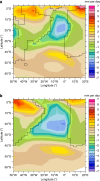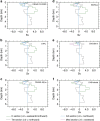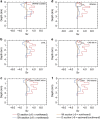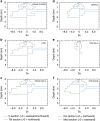A better-ventilated ocean triggered by Late Cretaceous changes in continental configuration
- PMID: 26777897
- PMCID: PMC4735640
- DOI: 10.1038/ncomms10316
A better-ventilated ocean triggered by Late Cretaceous changes in continental configuration
Abstract
Oceanic anoxic events (OAEs) are large-scale events of oxygen depletion in the deep ocean that happened during pre-Cenozoic periods of extreme warmth. Here, to assess the role of major continental configuration changes occurring during the Late Cretaceous on oceanic circulation modes, which in turn influence the oxygenation level of the deep ocean, we use a coupled ocean atmosphere climate model. We simulate ocean dynamics during two different time slices and compare these with existing neodymium isotope data (ɛNd). Although deep-water production in the North Pacific is continuous, the simulations at 94 and 71 Ma show a shift in southern deep-water production sites from South Pacific to South Atlantic and Indian Ocean locations. Our modelling results support the hypothesis that an intensification of southern Atlantic deep-water production and a reversal of deep-water fluxes through the Caribbean Seaway were the main causes of the decrease in ɛNd values recorded in the Atlantic and Indian deep waters during the Late Cretaceous.
Figures









References
-
- Keeling R. E., Körtzinger A. & Gruber N. Ocean deoxygenation in a warming world. Annu. Rev. Marine Sci. 2, 199–229 (2010). - PubMed
-
- Jenkyns H. C. Geochemistry of oceanic anoxic events. Geochem. Geophys. Geosyst. 11, doi:10.1029/2009GC002788 (2010).
-
- Meyer K. M. & Kump L. R. Oceanic euxinia in earth history: causes and consequences. Annu. Rev. Earth Planet Sci. 36, 251–288 (2008).
-
- Monteiro F. M., Pancost R. D., Ridgwell A. & Donnadieu Y. Nutrients as the dominant control on the spread of anoxia and euxinia across the Cenomanian-Turonian oceanic anoxic event (OAE2): model-data comparison. Paleoceanography 27, doi:10.1029/2012PA002351 (2012).
-
- Föllmi K. B. Early Cretaceous life, climate and anoxia. Cretaceous Res. 35, 230–257 (2012).
Publication types
LinkOut - more resources
Full Text Sources
Other Literature Sources

